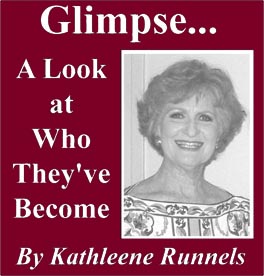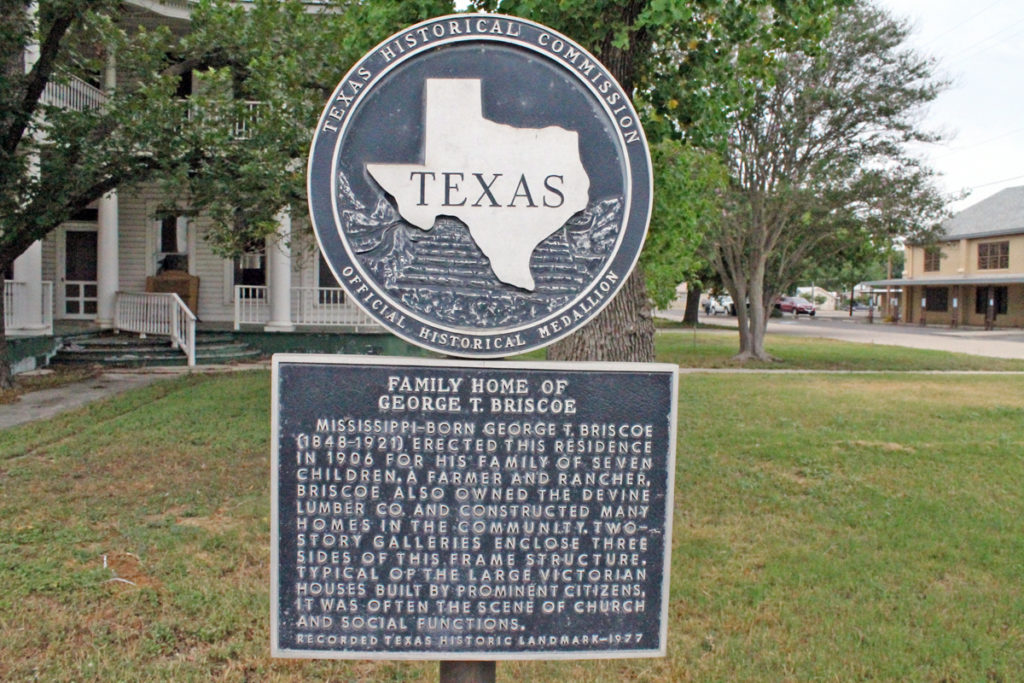

Many of the Briscoes in America are descended from Robert Brisko, a lineal descendant of the Normans who arrived in England with William the Conqueror in the year 1066. The change of spelling occurred about the time that Dr. John Briscoe I (1610-1699) came to America in 1634, and the “e” was added for those of this line.
Dr. John Briscoe I came to America out of Cumberland, England, with the Ark and Dove Expedition at the invitation of Lord Calvert. The expedition landed in what is now known as St. Mary’s County, Maryland, which is located some 30 miles down the Potomac River from present-day Washington, D.C., on the east bank. A son to John Briscoe I, Dr. John Briscoe II, was born in England (circa 1640) and sailed to America when he became “of age” and after his father was established. (In this article, there are references to several “John Briscoe” descendants of John Briscoe I.)
When the westward migration began in the early 1700s, some of the Briscoes left Maryland and settled in West Virginia (then Virginia); descendants of that family eventually settled in Uvalde County. The Medina County line did not begin their migration until around 1770. The ancestor of the Medina County line was another John Briscoe, born in 1741, who served in the Revolutionary War.
In the year 1785, John Briscoe married Charity Warren. The couple had seven children, three of whom served in the War of 1812. One of those who served was John Briscoe (b. June 20, 1794), the above-mentioned Medina County Briscoe ancestor.
In 1847, at the age of 53, John Briscoe, a childless widower, married a widow, Mary Gray Scurlock, who was 26. They had five children. One of those children was George T. Briscoe, born August 25, 1848, (married to Susie Chapman Robinson), the Briscoe who settled in Devine. The other children were Notley James, John Franklin, Mary Helena, and Emma (who died in infancy).
By 1851, John and Mary Briscoe were living in Jackson County, Arkansas. For his service in the War of 1812, in the late 1850s, John received a land grant which was located along the White River near Augusta, Woodruff County, Arkansas. The family subsequently established a plantation there; but in 1876, they sold out and traveled by ship to Port Lavaca, Calhoun County, Texas, where Mary Briscoe’s brothers were ranching. Soon, however, the family moved on to Gonzales County where they established a mercantile business in Waelder, Texas.
On December 19, 1877, George Thomas Briscoe married Susie Chapman Robinson, daughter of Stillman Tucker and Susan C. Dawn Robinson, who had come to Texas from Litchfield, Maine, in 1854. (George’s brother, John Franklin, married Susie’s half-sister, Mollie Robinson. The Robinson sisters were direct descendants of the Reverend John Robinson, who originated the idea of establishing a colony in America and chartered the Mayflower in 1620.) Then, with the completion of the railroad in 1881, and subsequently the opening up of the southeastern area of Medina County, George Thomas and Susie Robinson Briscoe moved to Devine in the fall of 1883.
Devine had been created in 1881 when the International & Great Northern Railroad extended its rails from San Antonio to Laredo as a stop on the rail line. It was named in honor of Judge Thomas Jefferson Devine of San Antonio, a prominent attorney for the railroad and a former Associate Justice of the Texas Supreme Court.
In 1884, George T. Briscoe built a home for his family in the southeast part of town. But, with seven children, in 1906, he built the larger, two-and-a-half story home known as the Briscoe House. The land on which the Briscoe House sat was originally owned by James H. Bright and wife, Sarah, who owned a farm of 320 acres in Medina County. Bright and Sarah, who were originally from Tennessee, had come to the Devine area from San Antonio shortly after the War Between the States, and Bright homesteaded land on which he raised horses and cattle.
Briscoe was a rancher, farmer, and businessman. He owned Devine Lumber Company, which for years was the only lumberyard within a 30-mile radius. He was also one of the original builders of homes in Devine, and he partnered with Wiley Moss, one of the first building contractors in Devine.
Upon first settling in Devine, The Briscoes had two children: John Tucker, born 1879, and Leon, born 1881. Other children born in Devine were Minnie, Stell, George Thomas, and Bryan.
Briscoe’s oldest son, John Tucker Briscoe, Jr., was elected to the Texas Legislature and served from 1907 through 1911. He also was in the lumber business and practiced law in Devine and San Antonio. George Briscoe’s second son, Leon (L.G.) Briscoe, was with the State Comptroller’s office in Austin for many years. The third son, George T., Jr., was a rancher and farmer in Devine. The last son, Bryan R., was an FHA appraiser and inspector. Daughter Minnie Briscoe was a music teacher in Devine for more than 50 years. Stell, who was the longest living child and lived in the Briscoe House until her death in 1982 at the age of 84, was a school teacher in San Antonio for more than 50 years. Kate, the youngest daughter, was the wife of Virgil DuBose – part owner and editor of the Devine News for many years.
Many descendants of the Briscoe family continue to reside in Devine. The famous Briscoe House is now gone, and the property on which it sat – as well as the Whitfield property behind it – is now owned by the First Baptist Church of Devine.
Be looking for more stories about the Briscoe legacy.
Adapted in part from the writings of Henry Briscoe. Original Source: “Branches and Acorns” SWTGS Quarterly Vol. II, n. 2, p. 21-24 – December 1986